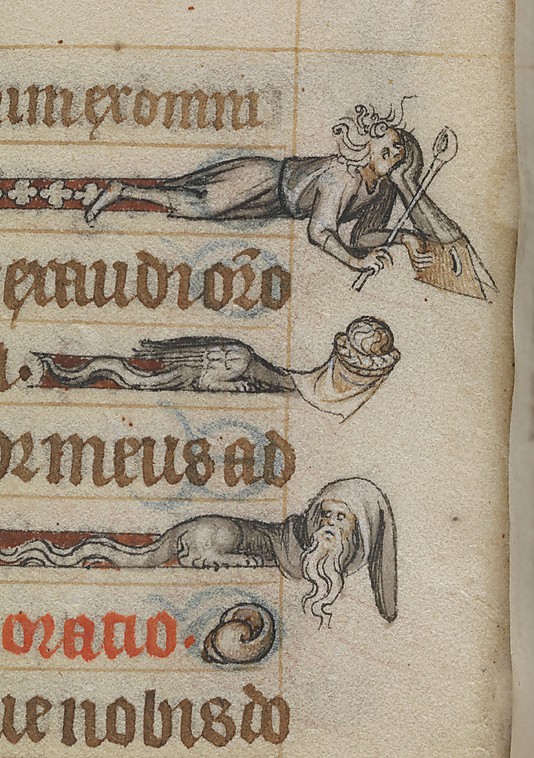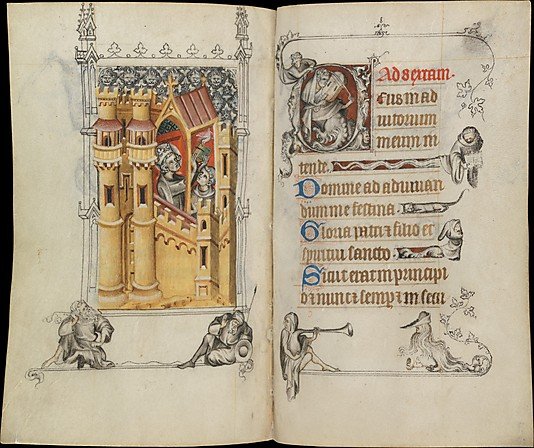Cover image: Jean Pucelle, The Hours of Jeanne d’Evreux, ca. 1324–28. Folios 154v-155r, The Miracle of the Breviary. The Metropolitan Museum of Art, Cloisters Collection, New York.
In one of my last posts, I promised that I would talk about non-architectural grotesques. So meet the Hours of Jeanne d’Evreux, a fourteenth-century illustrated French prayer book by Jean Pucelle. It now resides at the Cloisters in New York, and I highly recommend going to see it. It is certainly not the only medieval manuscript to have grotesques, but it is probably the most famous in that regard.

The margins of the book are decorated with a variety of little people and creatures, some of which are very gargoyle-like. It is difficult to know what to make of them. The entire manuscript is less than four inches in any direction, so the marginal illustrations are tiny! I’ve seen the book in person, and trust me, they are almost too small to make out, which makes scholars wonder why they appear there at all. Do they tell some story that is now lost to time, or do they serve another purpose altogether? They may be related to architectural gargoyles, or they may not be. As with architectural gargoyles, multiple interpretations exist. Some are similar to the theories I mentioned in my “Gargoyles Galore” post and others are very different, but none have won general acceptance thus far.


